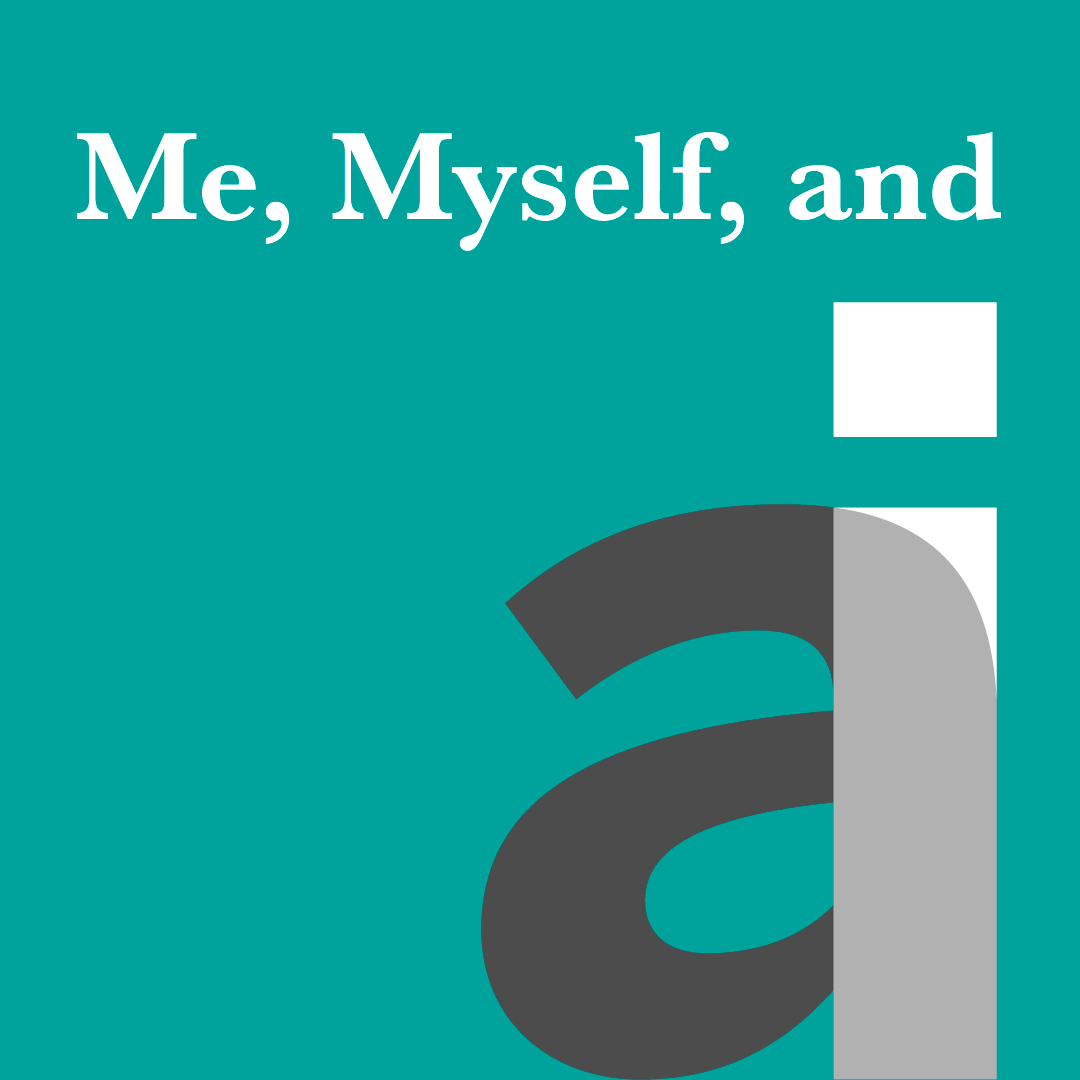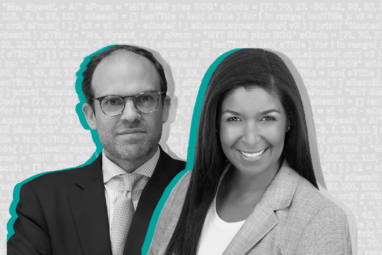Topics
Artificial Intelligence and Business Strategy
In collaboration with
BCGStarting a career with the ambition of becoming a medical doctor and ending up a technical leader for a major automaker might seem an unlikely path, but for Anders Sjögren, who leads data and AI innovation projects for Volvo Cars, it was a perfect trajectory.
On this episode of the Me, Myself, and AI podcast, Anders joins hosts Sam Ransbotham and Shervin Khodabandeh to explain the ways the carmaker uses data and artificial intelligence to inform manufacturing — ensuring that parts are made consistently and as efficiently as possible — as well as driver experience and safety. He also outlines some specific ways smart technology keeps drivers alert and aware of conditions around them and describes Volvo’s approach to technology-driven innovation.
Subscribe to Me, Myself, and AI on Apple Podcasts, Spotify, or Google Podcasts.
Transcript
Shervin Khodabandeh: How does one carmaker use AI to bring together all of the complex systems required to engineer a safe and high-performing vehicle? Find out on today’s episode.
Anders Sjögren: I’m Anders Sjögren from Volvo Cars, and you’re listening to Me, Myself, and AI.
Sam Ransbotham: Welcome to Me, Myself, and AI, a podcast on artificial intelligence in business. Each episode, we introduce you to someone innovating with AI. I’m Sam Ransbotham, professor of analytics at Boston College. I’m also the AI and business strategy guest editor at MIT Sloan Management Review.
Shervin Khodabandeh: And I’m Shervin Khodabandeh, senior partner with BCG and one of the leaders of our AI business. Together, MIT SMR and BCG have been researching and publishing on AI since 2017, interviewing hundreds of practitioners and surveying thousands of companies on what it takes to build and to deploy and scale AI capabilities and really transform the way organizations operate.
Shervin Khodabandeh: Today, Sam and I are delighted to be joined by Anders Sjögren, senior technical leader, data, analytics, and AI-enabled engineering, at Volvo Cars. Let’s get started. Anders, welcome to the show.
Anders Sjögren: Thank you.
Shervin Khodabandeh: So tell us a little bit about your role at Volvo Cars.
Anders Sjögren: I’m a technical leader in data, analytics, and AI in the engineering part [of the organization], so that’s the R&D. So, essentially, what comes in is a wish for a car, and what comes out is drawings and code. In that area, there are, of course, a lot of possibilities for data analytics and AI, both during the development process and also as part of the actual functions in the car — so intelligent functions and personalized functions and so on.
So my purpose here is really to make sure that we get the value that we can through data, analytics, and AI.
Shervin Khodabandeh: Is [your focus] the AI and data analytics that go into the car — like the sensors and all kinds of intelligent devices in the car that make driving safer and more interactive, and things like that? Or is it also customer acquisition and dealer networks and all kinds of data analytics to run a business of making and selling cars?
Anders Sjögren: Yes. So, I mean, all of those apply to Volvo Cars, but the part I’m really active in is more in the part of the making of the car.
Sam Ransbotham: I think that’s a great point because when most people think about cars and artificial intelligence, I think they immediately jump to this idea of fully self-driving cars. And what you’re pointing out is how much other stuff that there is going on, even in the production of cars, that can benefit from artificial intelligence. You know, I think perhaps everyone’s frustrated that we don’t have fully automated cars now, but there’s so much going on behind the scenes that people don’t get a chance to see. What are some of the examples of the ways that you’re using artificial intelligence in the production process?
Anders Sjögren: If we take a little bit of a step back, the goal of Volvo Cars is really to give people the freedom to move in a personal and sustainable and a safe way.
If we start with “personal,” then it’s really critical that we understand you and make you feel special as a customer or as someone in the car. And there, of course, it has to do with starting with the sensors and then really interpreting those values. That can be cameras, different types of steering input …
Another area is definitely sustainability. AI is being used there to make sure that we have as many lightweight parts as possible. So using AI, one can, for example, get mechanical parts with the same strength and those kind of properties, but with much lower weight and less material that’s being used.
Shervin Khodabandeh: In the design process, you’re talking about, right? As engineers consider all the different permutations of parts, yeah?
Anders Sjögren: In the design process — yes, exactly. That’s really the essence of AI, I think, in lots of engineering activities, is that we go from manually deciding first what we want to do, but then actually performing all the different steps. That’s the current way of doing it, while in the AI era, it’s much more about deciding and describing what are the aspects I want to reach to? What are things I want optimized, and what are maybe the boundary conditions? And then the AI helps you get there.
So in the context of the mechanical parts, you might say, “These are the attachment points. These are the strength and stiffness properties I want. Give me the part with those properties but [make it] as light as possible and also, of course, possible to produce.”
That could be one area. And also, it is super important for sustainability that we use as little material as possible and also have as low a rate as possible.
And then, of course, the third point was about [safety]. And, of course, we have autonomous cars, but also, even before that, there are other types of functionality being used. For example, understanding the driver: Is the driver aware or not? Should we maybe nudge him to take a cup of coffee or something if he seems to be tired?
In the later versions of our cars, we understand if there are some pets or children left in the car, maybe on a hot day, and then preventing them [from getting] hurt in such a situation and so on.
I’d say that those are some of the areas where AI can really be a core technology in bringing us toward our purpose.
Sam Ransbotham: That’s really interesting because lots of times organizations tell us they start with a problem they’re trying to solve and then find a technology to solve it, and that makes sense, because otherwise you’re trying to find a problem to fit a solution, which seems backward. You mentioned that your cars can sense … if a person or a pet is accidentally left in the car. How did Volvo make the decision to focus on that particular problem to solve?
Anders Sjögren: A lot of what we do is really created by real-world safety in that we actually see what are the actual causes of people getting injured. I mean, if we take the analogy with crashes and that type of safety, we have teams that go out to sites when there has been a crash to really see what actually happened in reality and not just on certification [from] that type of crash test and so on.
And, going back to this example, if we look here, pets and kids do get hurt — hopefully not in a Volvo car, but that’s reality, right?
But what you mentioned there is really super interesting because then it also goes the other way around: Like, now that we have these sensors, what are the other really valuable functionalities that we can provide our customers with through this, of course, taking privacy into account and so on?
Shervin Khodabandeh: This is quite intriguing because Volvo … I remember as a child that my uncle used to say, “You want a safe car, you get a Volvo.” And it’s always been synonymous with safety, and it’s really amazing to step back and think about … for a company who has put one of its main goals for safe experience, now, with the availability of this amount of data and all of this massive amount of processing, I could imagine there are so many use cases that, to Sam’s point, are being thought about. So that’s really, really encouraging.
What [does] the road map here look like? I mean, is this a constant sort of innovation ideation approach going on to say, “What else could we do in these three pillars of personal, safe, and sustainable?” What is the process for coming up with these ideas and picking up the good ones and pursuing them or not?
Anders Sjögren: I think that those ideas can either come from the technology side and be really inspired by that, or it could come from the analytics side. And often it’s when the new technology and the really customer-centric needs … where they meet, and also, of course, where we have the agility in the organization to execute on it. That’s really where we have something that’s really fruitful. It’s typically a mix of different sources of this: innovations and new directions, I would say.
Shervin Khodabandeh: And there’s a mechanism to create this interdisciplinary inspiration in the company?
Anders Sjögren: Yeah, I would say so. I would say that there are both formal mechanisms but also informal mechanisms. [As] a car company, Volvo Cars is not super big. Of course there are also smaller ones, but I think it’s also an advantage that, I mean, pretty much all the different steps, from product strategy, design, the R&D, engineering, and then the later stages …
The headquarters is in Gothenburg [in Sweden], within walking distance. The U.S. department is literally 50 meters from where I’m sitting right now, while 50 meters in the other direction, there are the crash test facilities and the safety center.
So, what I want to say with that is that it’s more easy to get connections and to create this kind of — how should I put it? — informal innovation activities.
Shervin Khodabandeh: This is where relatively smaller size and colocation really, really helps. To have teams that close to each other.
Sam Ransbotham: It’s funny to talk about it being small, because it’s certainly not a small company.
Shervin Khodabandeh: Everything’s relative, yeah.
Sam Ransbotham: Everything’s relative, I guess. As we’re chatting, I’m thinking about some of the people we’ve talked to before, and one of the recurring themes that people have mentioned is, oh, this idea [of] starting with a business problem: “You don’t have AI and find a place to use it. You start with a business problem and then solve it.” But this is kind of a nice mix on that — that it sounds like there’s a lot that starts with a business problem, but then, interestingly, once these processes are in place, and once these technologies are in place, then there becomes a grassroots innovation to say, “All right; how can we use that?” And that’s an interesting perspective that, I think, hasn’t come through strongly — or maybe I’m forgetting something — but it seems like that hasn’t come through as strongly. This is a nice mix of that, that maybe works in this size organization … this colocated organization.
Anders Sjögren: Yeah, and not least in the prototyping and ideation stages. But, then, of course, before it actually goes into the product, it needs to go through a more thorough review and so on.
Shervin Khodabandeh: There’s been quite a few investments and acquisitions of smaller AI startups and firms by Volvo. Tell us a bit about the overall ecosystem of internal and vendor and partner companies that come together to bring to life some of these AI-enabled ideas that you’re talking about. Is it internal? Is it external? Is it a mix? How do you think about the ecosystem?
Anders Sjögren: I would definitely say that it’s a mix. Some of the things … we need to do it ourselves to get the full understanding or where we really want to be in the forefront, and [in] some other areas, we definitely want to partner with other companies that are strong in those areas. Traditionally speaking, a car is a super complex product. It has hundreds or thousands of different parts that all need to come together. And, of course, it is a space where there is traditionally a lot of suppliers supplying different parts.
Lately, we are moving more toward bringing software implementation in-house to increase the speed and agility in the development process.
Sam Ransbotham: That seems particularly complicated in auto manufacturing because if I think about how cars got started, they were independent systems. There was a braking system, and a power train system, and an air conditioner, and an infotainment system, and all these were separate. And that’s kind of nice because then we have a certain, different standard than we would have for the infotainment system than we would have for the braking system — or at least I hope that there would be. But what you’re pointing out is, each one of these may be using sensors that come from a different area, and how the whole car has become more complicated independently, but it’s also become more complicated cohesively, trying to connect all these parts and have them work together.
And that seems, on the one hand, an opportunity for artificial intelligence but, at the same time, a challenge.
Anders Sjögren: Yeah. It’s 100% true. It’s both a really big opportunity, but that also means that’s really one of the core challenges — I mean, how to build the cohesive understanding of both the inside and the outside of the car.
We speak about the customer digital twin and vehicle digital twin and so on, and in some sense, those aspects can mean a lot of different things. But, of course, these different systems that you speak about, they are traditionally in different parts of the company, so that also means that there is a lot of cross-functional collaboration that is needed. But we really need to bridge those kind of organizational borders.
I think that that’s really one of the key points — that is, in order to get successful adoption of the analytics and AI, it really means that different parts of the company need to work together to make it happen. Because otherwise, it will just become a silo. Some people will not really have the benefits of it.
Shervin Khodabandeh: You know, it’s very true. It’s a common theme, and in our work at BCG, we have this rule of thumb — the 10:20:70 — where we say 10% is the data and algorithms, and 20% is the technology and the digital platform, but 70% of it is the business integration and implementation and bringing different parts of the organization together. This, perhaps, is nowhere more true than at a car company, where you have, as you said, Sam, seemingly disparate systems that are coming together to create a bigger system, but each one of these units has been perfected individually, and now you want the collective perfection as well.
Sam Ransbotham: Anders, we talked a lot about Volvo. How did you personally get interested in artificial intelligence, in data, in technology and analytics? What’s your origin story?
Anders Sjögren: I think I’ve always been interested in computers. My father was really an addict, so I kind of grew up with that.
I started out as an engineering student [and got a] master’s in computer science. And then I started off as a research engineer in the medical area, at the university hospital in Gothenburg, then found out fairly quickly that in order to really make use of data — conclusions and so on come from data … so I then went into the area of mathematical statistics.
So I did a Ph.D. in that, then went back to software product development. After some time, I went back to academia for a couple of years, did a postdoc, and then was offered a good opportunity at Volvo Cars. So I’ve essentially been here for seven years now. That’s a bit of my history.
Shervin Khodabandeh: Quite inspiring.
Sam Ransbotham: Anders, we also want to ask you a few rapid-fire questions, and the idea is just to answer it as quickly as you can. These are not particularly Volvo questions.
What have you been proudest of that you’ve done with artificial intelligence?
Anders Sjögren: The problem is that most of the things, I can’t speak about.
Shervin Khodabandeh: That’s a great answer too.
Sam Ransbotham: You have to wait and see. OK, well, what worries you about artificial intelligence?
Anders Sjögren: The worries?
Sam Ransbotham: Mm-hmm.
Anders Sjögren: Oh, I think, of course, one is the longer term — the kind of singularity things. But I think a bit closer to now, so to speak, we definitely see that this super-fast progression of large language [models] and what they can do, and also the kind of systems that don’t just take one problem and give one answer but can really produce a series of steps, in sequence. And that is a super-powerful technology, but a super-powerful technology can be used both for good and for bad.
That’s both something that makes me super excited but also a little bit worried. What will the world look like in 20 years?
Sam Ransbotham: What’s your favorite activity that does not involve technology?
Anders Sjögren: Motorcycling, but obviously using technology. But it’s more of a … yeah.
Sam Ransbotham: Technology’s involved. Everything’s involved in technology in some way.
Anders Sjögren: Yeah, pretty much.
Sam Ransbotham: What’s the first career you wanted when you were a kid? What did you want to be when you grew up?
Anders Sjögren: Medical doctor.
Sam Ransbotham: Well, that ties with your first career in working in the medical company, then.
Anders Sjögren: Yeah, I think so, but then I found mathematics and those things to be super exciting, so I went into that area.
Sam Ransbotham: What’s your greatest wish for artificial intelligence in the future? What do you hope that we can gain from the advent of these technologies?
Anders Sjögren: If we say the greatest wish, I think it is that we find a way to use it in a way for our common good. We need to find a way to integrate it into society, and I think that that is really my biggest wish for it.
Shervin Khodabandeh: In a relatively short time, we learned so much about various uses of data, AI, and technology, in just what it takes to build a car in new ways, and all the different ways that AI and tech are helping and serving the people who are driving them. It’s been really enlightening, Anders. Thank you for joining.
Anders Sjögren: Thanks for having me.
Shervin Khodabandeh: Thanks for listening. On our next episode, Sam and I speak with Shilpa Prasad, entrepreneur in residence at LG Nova. Please join us.
Allison Ryder: Thanks for listening to Me, Myself, and AI. We believe, like you, that the conversation about AI implementation doesn’t start and stop with this podcast. That’s why we’ve created a group on LinkedIn specifically for listeners like you. It’s called AI for Leaders, and if you join us, you can chat with show creators and hosts, ask your own questions, share your insights, and gain access to valuable resources about AI implementation from MIT SMR and BCG. You can access it by visiting mitsmr.com/AIforLeaders. We’ll put that link in the show notes, and we hope to see you there.







